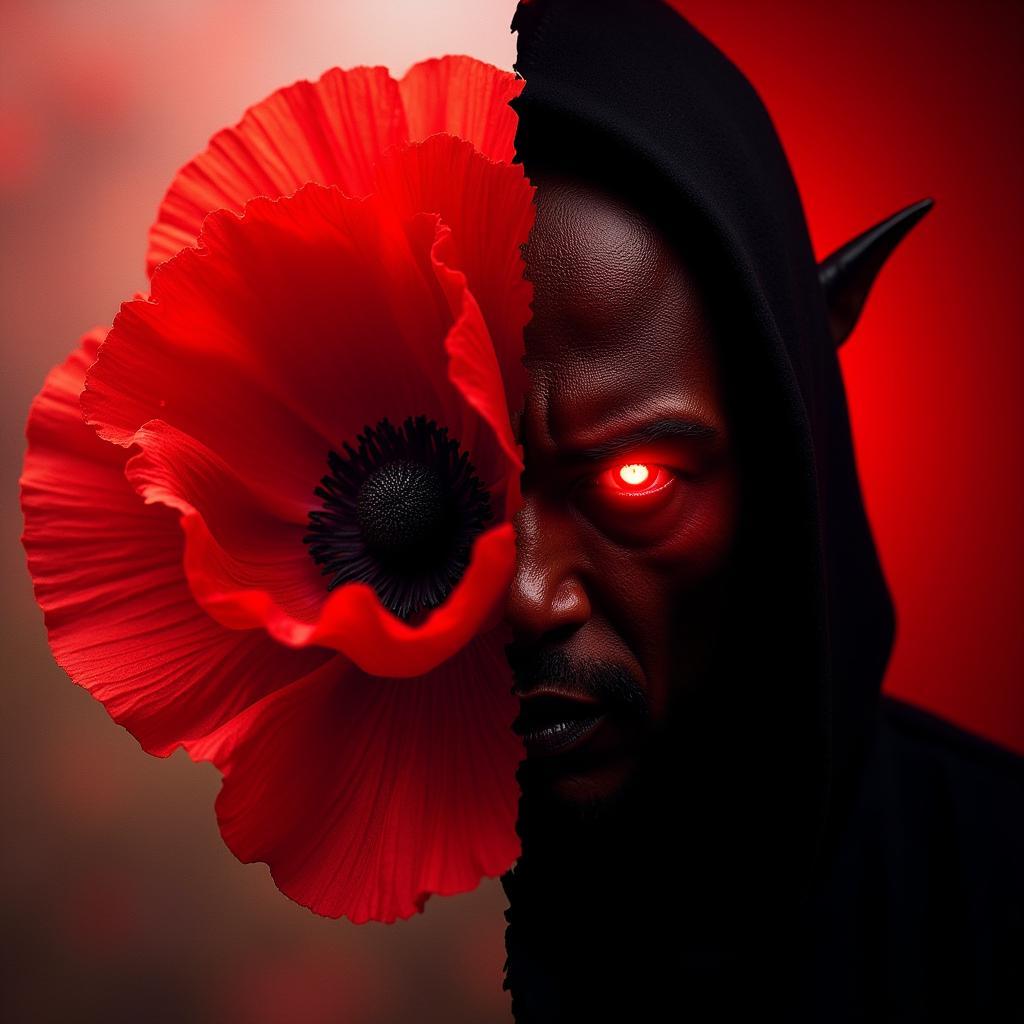The question “what is the most evil color?” is more complex than it seems. Color doesn’t have inherent morality. However, cultural associations, psychological effects, and historical context can influence our perception of certain colors as “evil.” This exploration delves into the psychology of color, cultural interpretations, and how these factors contribute to the perception of certain colors as malevolent.
Color plays a significant role in our lives, influencing emotions, behaviors, and even our purchasing decisions. While it’s difficult to definitively label a color as “evil,” we can examine how certain hues have been linked to negative concepts throughout history and across cultures. Let’s unravel the fascinating connection between color and our perception of evil.
Decoding the Dark Side of Colors
While personal preferences play a role, some colors consistently evoke negative feelings across cultures. Black, for instance, is often associated with death, mourning, and the unknown. This association likely stems from its connection to darkness and the night, a time historically associated with fear and danger. Similarly, deep reds, reminiscent of blood, can evoke feelings of unease, aggression, or danger.
 Black Color Association with Evil
Black Color Association with Evil
What colors represent Halloween? Often, it’s these dark and brooding shades that create a spooky atmosphere. But the “evil” connotation isn’t limited to just black and red. Even seemingly innocuous colors can acquire negative associations depending on the context.
Cultural Contexts and Shifting Perceptions
Cultural context plays a crucial role in how we interpret color. In some Eastern cultures, white, a symbol of purity in the West, is associated with mourning and death. This demonstrates how the same color can hold vastly different meanings across cultures, highlighting the subjectivity of color perception. Consider how color is used in film and literature. Villains are often portrayed wearing dark colors, reinforcing the association between darkness and evil.
What color stone is January? Garnet, a deep red, is the birthstone for January. While beautiful, the color red, in its deeper, more intense shades, can be associated with anger, aggression, or even the demonic.
 Red Color Cultural Associations
Red Color Cultural Associations
The Psychology of Color and Evil
Psychology also offers insights into our color associations. Darker colors are often linked to negative emotions like sadness, fear, and anger. This connection can be attributed to evolutionary factors, as darkness historically represented vulnerability and danger. Brighter, more saturated colors, on the other hand, tend to evoke positive emotions. This doesn’t mean bright colors can’t be used to depict negativity, but their association with evil is less common.
What is the color apricot? This soft, warm hue is generally associated with positive feelings. It’s unlikely to be perceived as “evil.” This highlights the subjective and culturally influenced nature of color perception.
The “Most Evil” Color: A Matter of Perspective
So, what is the most evil color? There isn’t a single, universally agreed-upon answer. The perception of color is influenced by a complex interplay of cultural, psychological, and personal factors. While certain colors like black and deep red often carry negative connotations, their “evilness” is ultimately a matter of interpretation.
What are Disney colors? Disney utilizes a vibrant palette, often incorporating bright and cheerful hues. This further illustrates how color can be used to evoke specific emotions and create a desired atmosphere.
Expert Insights
Dr. Anya Sharma, a renowned color psychologist, notes, “Color perception is subjective and influenced by individual experiences and cultural background. What one person finds unsettling, another might find comforting.”
Professor Michael Dubois, a historian specializing in cultural symbolism, adds, “The meaning of color has evolved over time and varies significantly across different societies. Attributing ‘evil’ to a specific color overlooks the rich tapestry of cultural interpretations.”
Conclusion
The question of the most evil color is less about the color itself and more about our perception of it. While black and deep red often take center stage in discussions of “evil” colors, the ultimate interpretation is shaped by individual and cultural contexts. Understanding the psychology and symbolism of color can help us appreciate the nuances of its impact on our emotions and perceptions. So, while there’s no single “most evil color,” exploring the reasons why we associate certain colors with negativity offers a fascinating glimpse into the human psyche.
FAQ
- Is black inherently evil? No, its association with evil is primarily due to cultural and historical factors.
- Can bright colors be associated with negativity? Yes, context plays a crucial role. A bright, garish color can be unsettling depending on its use.
- Do colors have universal meanings? No, color interpretations vary significantly across cultures.
- How does psychology influence color perception? Our brains associate certain colors with specific emotions based on evolutionary and learned experiences.
- Why are villains often depicted in dark colors? This is a cultural convention that reinforces the association between darkness and evil.
- What color is Makima’s hair? While seemingly unrelated, this question highlights the importance of color in character design and how it can contribute to our overall perception.
- Can color influence our behavior? Yes, studies have shown that color can impact mood, appetite, and even purchasing decisions.
Need help choosing the perfect colors for your space? Contact us! Phone: 0373298888, Email: [email protected] or visit us at 86 Cầu Giấy, Hanoi. Our 24/7 customer service team is ready to assist you.

